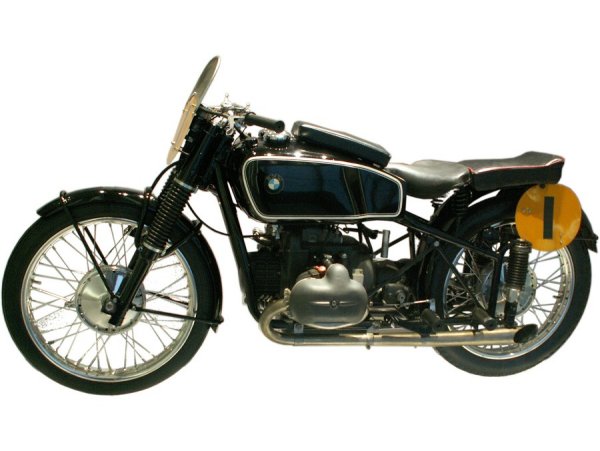


The Isle of Man with its Tourist Trophy is not only famous as the inofficial motorcycle world championship track. It has been in existence ever since the British had to live with the nationwide speed limit of 20 kmh. Since 1907 no foreigner had ever won the title. The unusually taxing course over the islands mountain roads, which was never planned as a racing track, was tamed by the young German, Georg ('Schorsch') Meier in 1939 when he rode to victory on a 500 cc compressor BMW.
Lap for lap he increased his lead, which, at the end of the race, had grown to a full 2 minutes over the next competitor, also a BMW. Unfortunately, the third BMW was involved in a tragic accident which, 11 days later, cost the Austrian rider, Karl Dall, his life.
The period after the assumption of power by the Nazis, between 1923 and 1933, was very demanding for the manufacturers of automobiles in Germany, it was however, also a very successful period. Mercedes and Auto Union ruled the European racing world apparently at will, BMW celebrated numerous racing victories in the two-wheel sector, as well as any number of speed-records.
Apart from that, the company was making significant progress, also as an automobile manufacturer. It started in 1932 with the construction of a six- cylinder in-line engine, the second in BMWs history after the legendary First World War aircraft engine, the IIIA. Indeed, this time the engine had a much smaller displacement of only 1,2 liters.
How its final construction was decided, is even more peculiar. There were three drafts proposed, and because their relationship with Daimler Benz in Stuttgart was still very good, and nobody there saw BMW as serious competition, the decision of what the best solution was, was made by Hans Niebel, their technical director. Rudolf Schleicher got the go- ahead and developed a car with 22 kW (30 Hp), somewhat larger than the one based on the Austin Seven. The front independent suspension was improved by adding additional wishbones, at the rear however, one returned to the rigid axle. In the beginning, the 303 sold quite well.
The license acquisition of this engine from Pratt & Whitney in 1928 led to the success in the field of aero engines. Funds that are generated here were probably important for the development in the automotive sector. 04/16